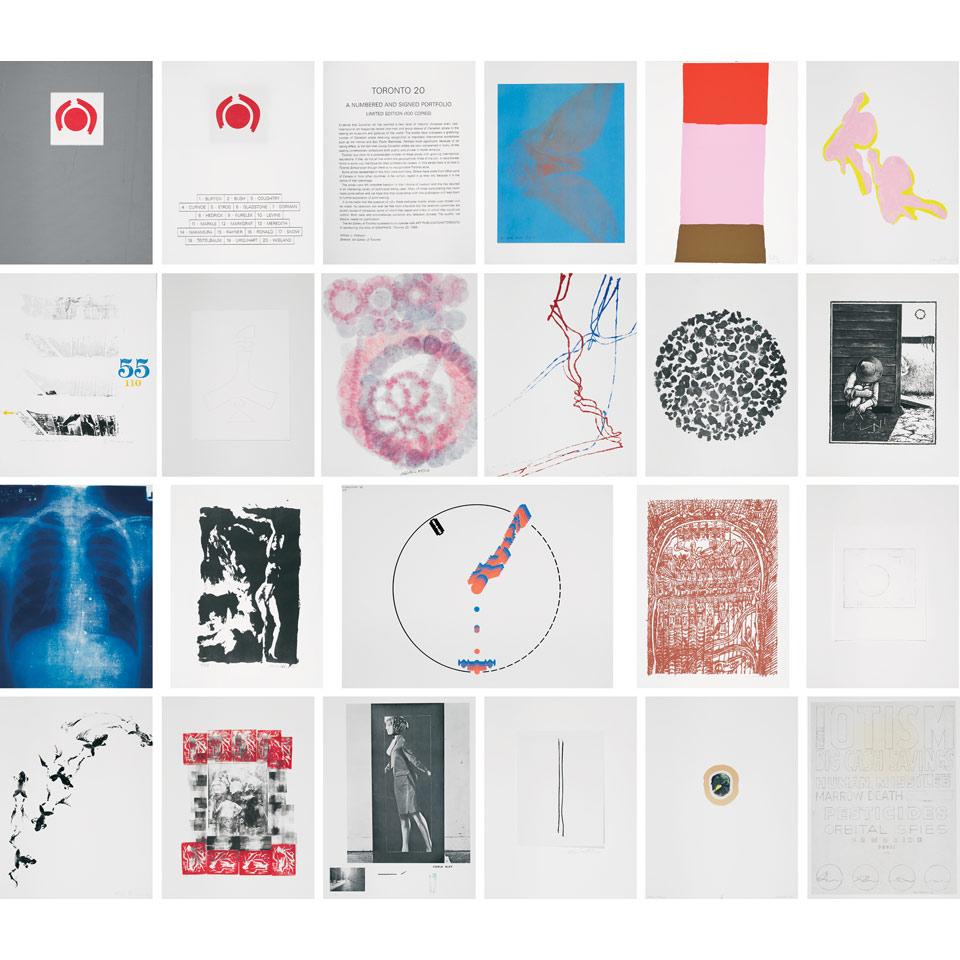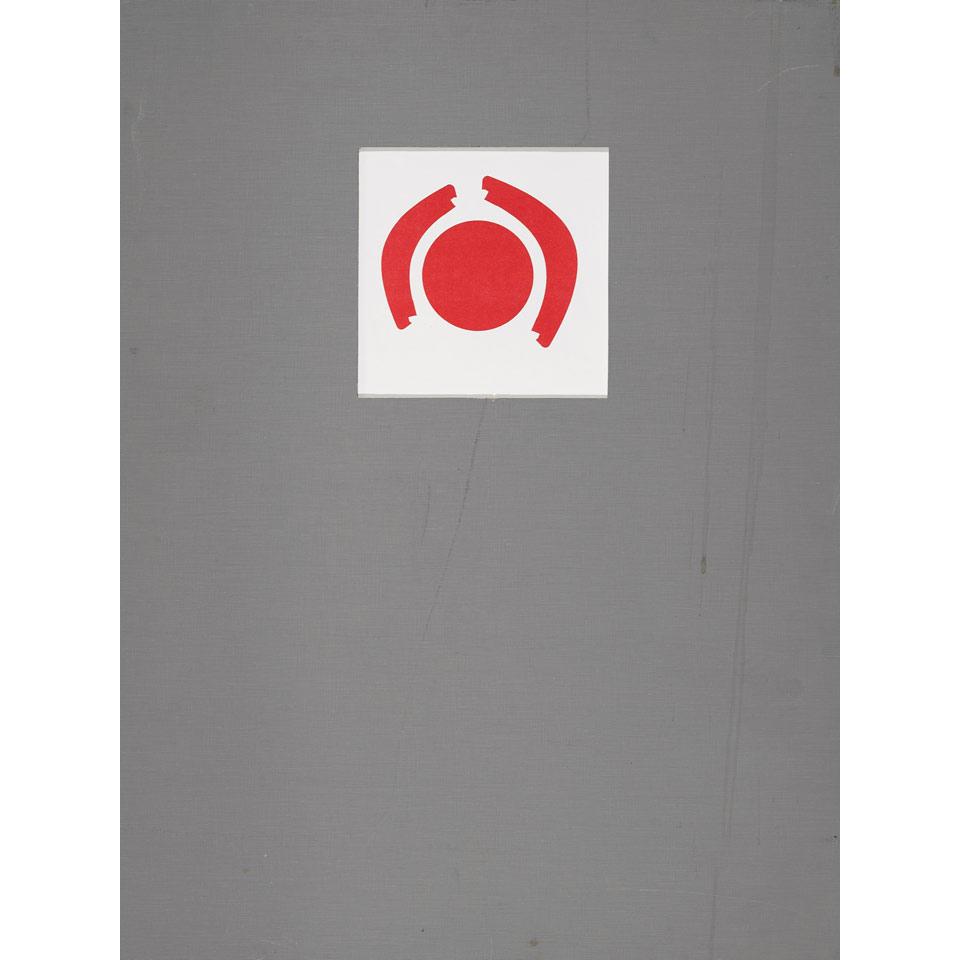Lot 143
VARIOUS ARTISTS

Additional Images

Note:
The folio includes prints by Dennis Burton, Jack Bush, Graham Coughtry, Greg Curnoe, Sorel Etrog, Gerald Gladstone, Richard Gorman, Robert Hedrick, William Kurelek, Les Levine, Robert Markle, Waltraud Markgraf, John Meredith, Kazuo Nakamura, Gordon Rayner, William Ronald, Michael Snow, Mashel Teitelbaum, Tony Urquhart and Joyce Wieland.
In his essay, The Wunderkammer (1989), Ihor Holubizky describes the Toronto 20 Portfolio:
“The portfolio was pluralist in style, images, and techniques…Kurelek was dissatisfied with the density of his lithograph image and retouched each of the 100 prints. Sorel Etrog, Kazuo Nakamura, Mashel Teitelbaum, and Joyce Wieland used the print medium to express the notion of the elusive image and impermanence…Etrog’s signature link motif was formed with a coat hanger to create a white on white embossed print. Levine’s X-ray piece, a medical negative was used to produce a print in the manner of a vernacular snapshot. The prints by Robert Markle, Robert Hedrick and John Meredith, although conventional in technique, were suited for their particular interest in gestural invention and draughtsmanship.”
“The works by Dennis Burton, Graham Coughtry, Greg Curnoe, Richard Gorman, Gordon Rayner, William Ronald, Michael Snow and Tony Urquhart, were variations of monoprint techniques, to express the process of making the image in a direct and recognizable fashion. Gordon Rayner enlisted the aid of a live frog, which he covered with paint. The frog worked for its ‘keep’ (Rayner fed it worms), imprinting each of the 100 sheets in an uncontrollable manner…Richard Gorman utilized a similar behavioural technique, using ink covered steel balls and magnets to move them on paper-creating a gesture based on chance and phenomenon. Greg Curnoe gathered broken hockey blades for his monoprint, to which he added his signature rubber stamps to indicate the edition number. William Ronald used found images from the media. Each print was composed with a different central image and border by a block print application in different combinations. Tony Urquhart’s work was the most discrete, the difference between each imprint being a collaged element which varied with the scissor cut of the paper…”
Please visit the Centre for Contemporary Canadian Art’s website (http://bit.ly/m1nKzO) for the full text of Ihor Holubizky’s essay.































